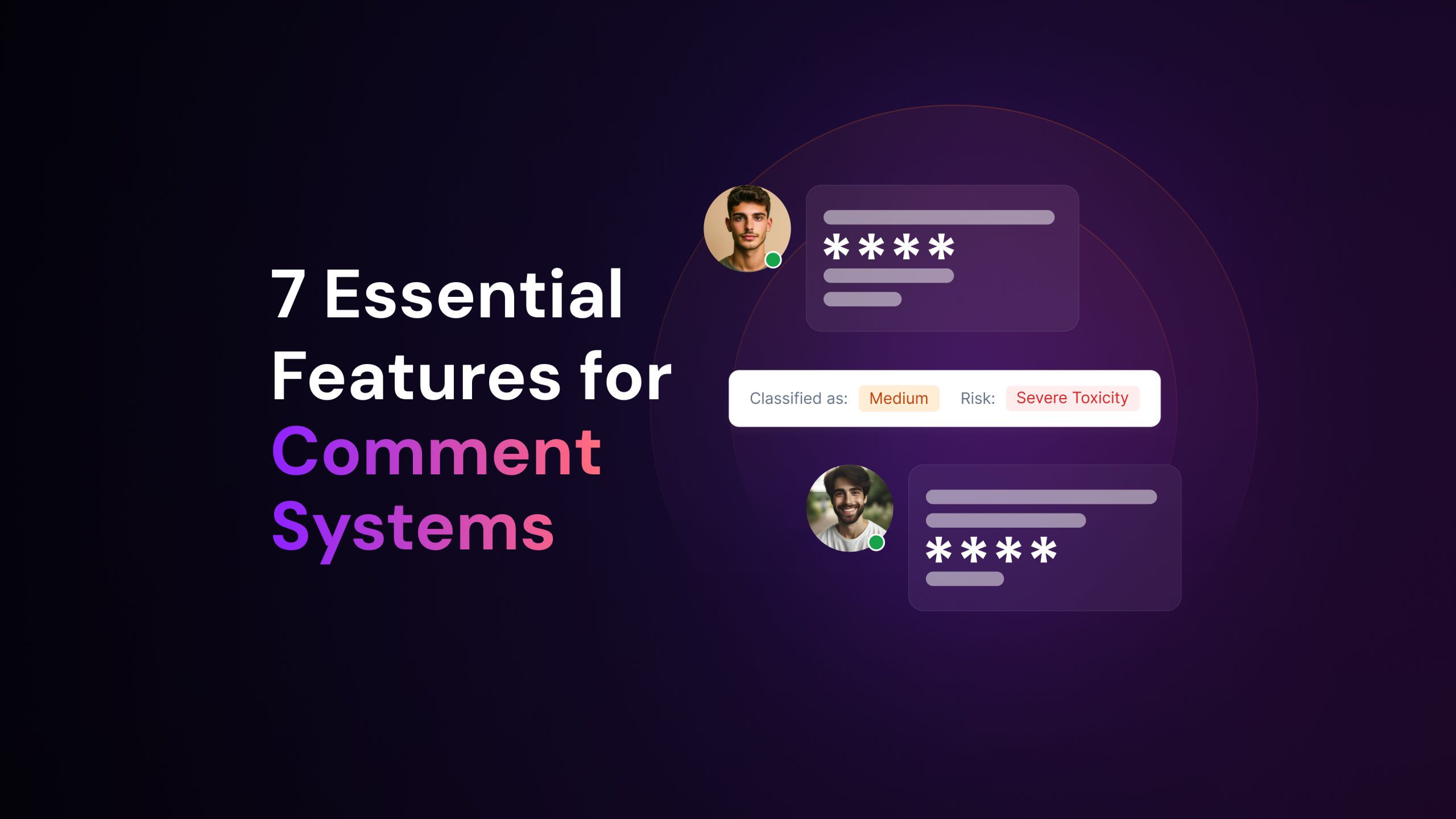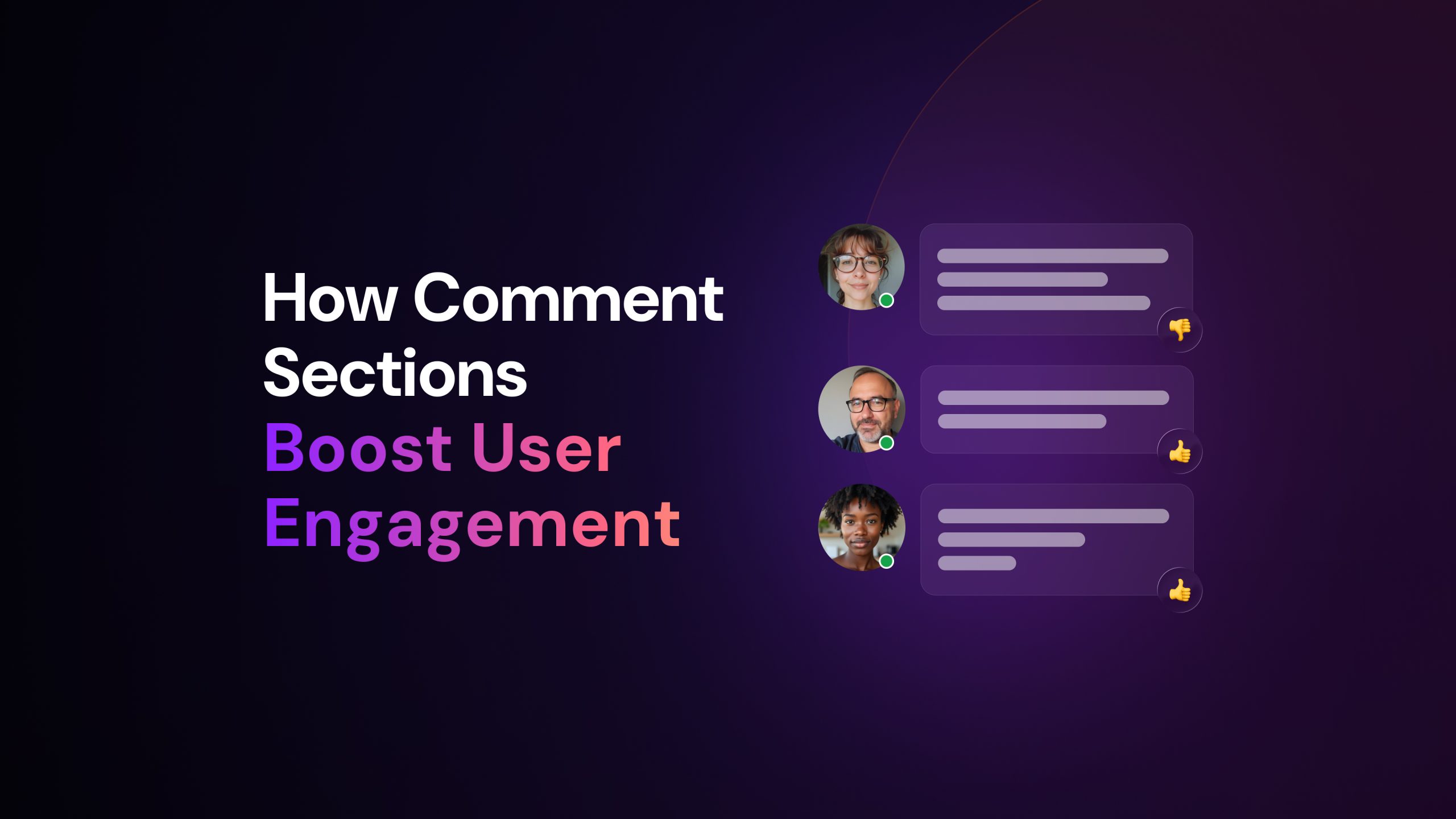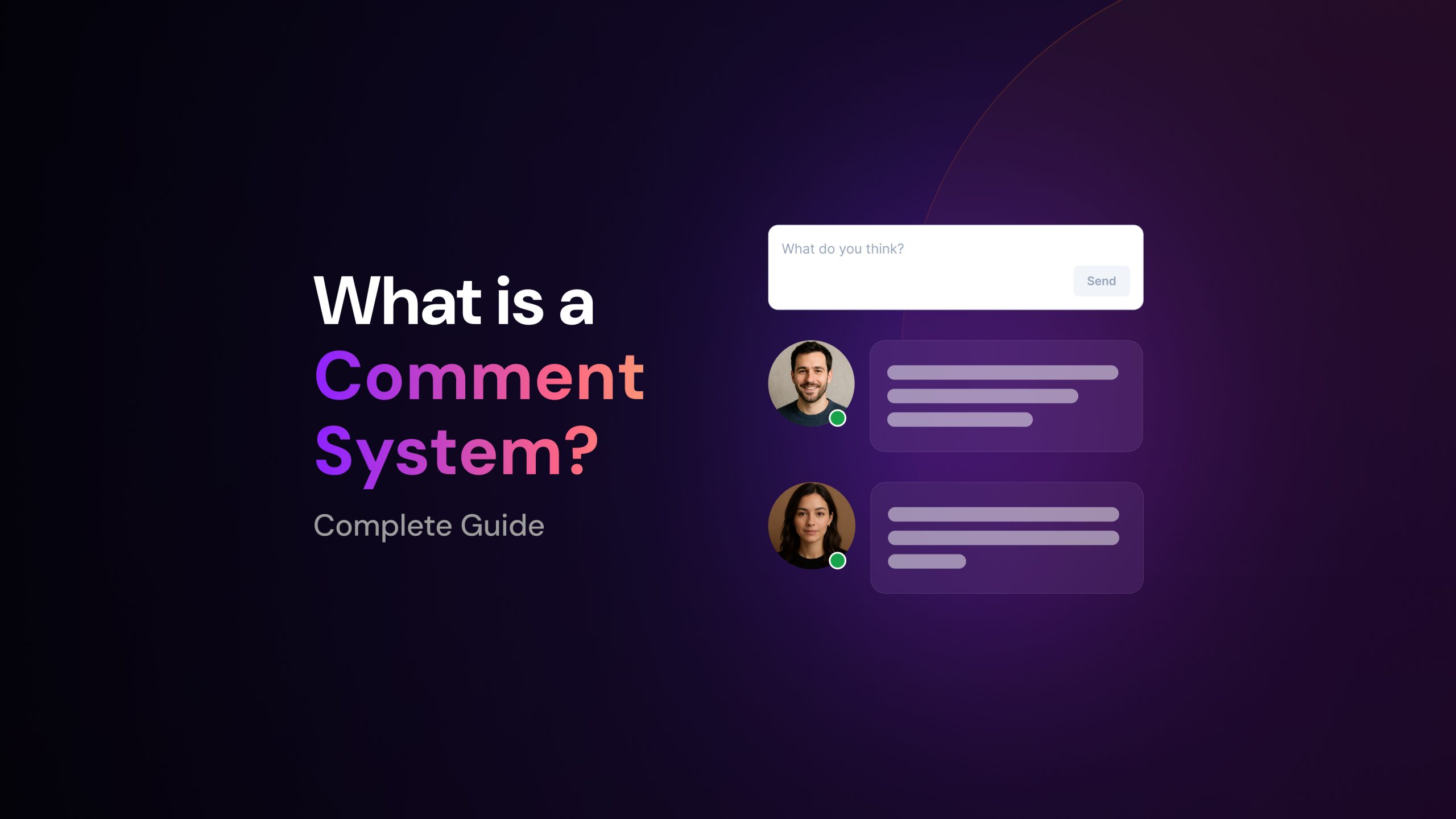As publishers and brands shift away from traditional social platforms like Instagram and Facebook, there’s a growing focus on building owned online communities – spaces they fully control – where real connections can thrive.
But building a lasting community takes more than just launching a platform or bringing fans to your website. It requires the right tools to make users feel seen, heard, and truly part of something. And that is where a comment system comes into play.
Continue reading to understand exactly what a comment system is and why you need one, as well as seven essential features for comment systems in 2025.
What is a Comment System?
A comment system is a tool that can be integrated into websites, blogs, apps, and other online platforms to enable users to spark conversations directly below your posts.
It creates a two-way communication channel between content creators and their audiences, allowing readers to take an active role in your community. Also known as a commenting system, these platforms often include user profiles, moderation tools, media embedding, analytics, and more.
Why do you need a Comment System?
A good comment system doesn’t just allow creators and publishers to increase engagement on their digital platforms. They increase session time, encourage return visitors, collect valuable feedback and even help generate revenue.
Moreover, the tool even fuels your website’s SEO. User-generated content adds fresh keywords, lengthens time on page, and signals search engines that your content is active and valuable.
Top 7 Essential Features for Comment Systems in 2025
1. Intelligent Moderation and Content Quality Control
Moderation features are crucial for running a comment system on your website or blog. Today’s comment platforms combine AI-powered pre-moderation with manual review options, giving publishers and creators complete control over the quality of discussions.

Prioritize platforms that offer intelligent spam detection, which can identify common indicators such as irrelevant URLs, suspicious usernames, and nonsensical content. The AI should also evaluate comment quality through natural language processing, checking for relevance to the topic and constructive value to the discussion.
Your moderation toolkit should include:
- Real-time filtering across multiple languages
- Customizable automated rules and triggers
- User management controls for banning or limiting privileges
- Comment editing and removal tools
- Moderation queues for human review
- User reporting systems
Including these features in your moderation control panel can lighten your team’s workload while preserving productive discussions on your website. To ensure you’re following content moderation best practices, your team can focus on edge cases and community engagement, letting AI handle routine moderation tasks.
Platforms like Arena Comment System also provide detailed analytics on moderation actions and comment trends, helping you refine your approach over time.
2. Real-Time Engagement Features
When searching for a comment system, look for options that enable you to engage users in multiple ways without requiring them to leave your platform. The right features can transform your comment section into a dynamic hub, fostering community-building and real-time engagement.
Here are some of the key capabilities to look for:
- Live threading enables conversations to branch naturally, with replies appearing instantly as users respond to each other. This kind of hierarchical structure helps users follow multiple discussion threads while maintaining context and clarity.
- Push notifications alert users when someone responds to their comments or when discussions they’re following receive new contributions, encouraging return visits and sustained engagement.
- Real-time updates deliver new comments without requiring page refreshes, creating a fluid experience similar to social media platforms. By leveraging live updates, comments appear as they’re posted, maintaining conversation momentum and encouraging active participation.
Combining these features creates an immersive discussion environment that keeps users engaged directly on your platform rather than turning to social media for real-time interactions.
3. User Authentication and Profile Systems
A robust authentication system forms the foundation of any modern comment system, balancing accessibility with accountability. Modern platforms should enable social media login options alongside traditional email verification, reducing friction in the sign-up process and streamlining the user experience. Custom profile fields can be tailored to your community’s specific needs, whether that’s professional credentials for industry discussions or gaming achievements for entertainment platforms.

Not only do you gain greater control over who can access your comment section, but you also empower your audience to create user profiles that serve as digital identities within your community. Readers can personalize avatars, bios, and other details, turning passive visitors into engaged participants. Customized profiles foster a stronger sense of belonging, encourage constructive contributions, and motivate users to return to your website on a regular basis.
To offer an even more immersive experience, consider implementing gamification elements and reputation systems to highlight top contributors and encourage readers to engage in the discussion. Even adding simple features, such as upvotes and downvotes, can motivate users to actively participate, reward helpful contributions, and promote a healthier, more engaged community.
4. Monetization Capabilities
As online communities grow, so do the opportunities to generate revenue from user engagement. Adopting a comment system can do more than just boost engagement, helping publishers, brands and creators to unlock powerful tools for monetization.
This is a fairly recent addition to comment system platforms, so not many providers might have monetization options available. Arena Comment System, on the other hand, supports a variety of revenue opportunities, including native ad placements, affiliate links, sponsored content and even lead capture forms.
5. Analytics and Reporting Tools
A modern comment system should provide comprehensive analytics that help you understand and improve community engagement. Beyond basic metrics like comment counts, you need deeper insights into how your community interacts with content and with one another.
Look for systems that track engagement patterns, including peak activity times, most-discussed topics, and user interaction flows. Advanced sentiment analysis can identify the emotional tone of discussions and pinpoint potential issues before they escalate.
Key metrics your comment system should measure include:
- User participation rates and returning commenter statistics
- Comment quality indicators, such as length and depth of discussion
- Response times and thread development patterns
- Correlation between content performance and comment activity
- User reputation and contribution trends
Ideally, you’ll want a comment system platform that offers customizable dashboards, making data analysis straightforward and intuitive. The Arena Comment System comes with a built-in, intuitive dashboard to help you track engagement metrics, identify top contributors, monitor sentiment, and uncover trends, turning raw data into valuable insights that support smarter content and community strategies.
6. Rich Media and Text Formatting
Discussions become more dynamic when you let participants personalize their comments. Look for platforms that support various media options like images, GIFs, and videos. The option to preview links automatically helps users reference external content smoothly without interrupting the discussion flow.
Essential formatting tools, such as markdown support or rich text editing, allow commenters to structure their thoughts with bold text, italics, and bulleted lists. Features like @mentions and hashtags help users connect discussions and engage with other community members.
If you want to incorporate these capabilities into your comment system, ensure you choose a platform that optimizes media for performance through automatic compression and lazy loading. Optimizing media performance ensures fast page loads while providing your community with the expressive tools they need to engage in meaningful conversations.
7. Customization and Integration Capabilities
When implementing a comment system on your website, blog, or app, it is essential to choose a tool that provides flexibility to modify both visual elements and technical features, creating a seamless extension of your brand.
On the visual side, look for systems that allow comprehensive styling through custom CSS, enabling you to match your brand’s typography, color scheme, and overall aesthetic. The ability to white-label the comment system and customize user avatars ensures a consistent branding experience throughout.
Technical integration capabilities are equally important. The system should provide:
- Robust API access for deep integration with your backend systems
- Support for Single Sign-On (SSO) to maintain a unified authentication process
- Custom callbacks for analytics integration and event handling to track engagement metrics and respond to user interactions programmatically
- Support for implementing AI-driven personalization to enhance user engagement
Combining visual customization tools and developer-focused APIs enables your design team to maintain brand consistency while providing your technical team with the necessary resources for sophisticated platform integration.
Prioritize platforms that are GDPR compliant, ensuring you can maintain control over user data while meeting regulatory requirements. Flexibility is essential, so ensure the features can adapt as your needs evolve and regulations change.
Conclusion
When selecting a comment system platform, ensure that you consider your community’s specific needs and goals. Make sure to look for a lightweight and easy-to-install tool with features that enhance user experience and align with your long-term goals.
Remember: even the most advanced features won’t help if they don’t align with your users’ preferences and management capabilities. Take the time to assess options thoroughly to create a vibrant, self-sustaining community.
Sign up now at Arena to see the impact of an effective engagement strategy on your bottom line. Start leveraging our powerful features to boost engagement and retention.


